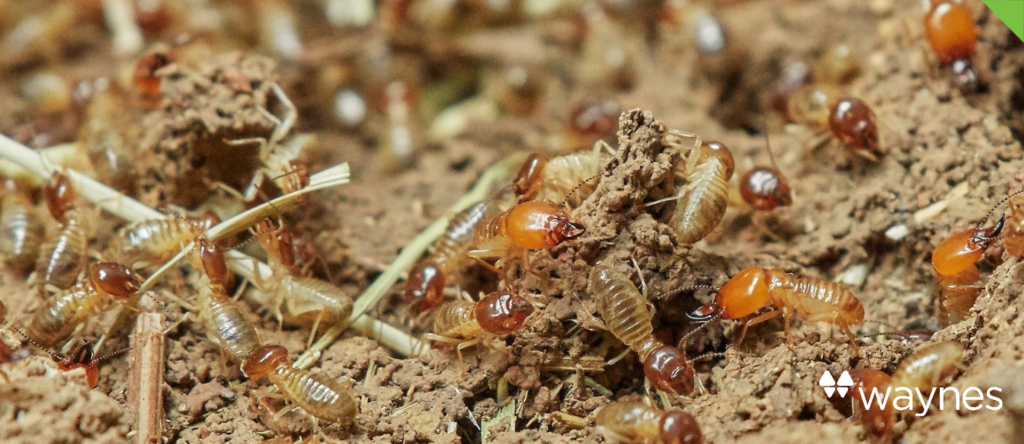What’s the best part about summer? Maybe it’s the long days or beach vacations. Perhaps you are excited about the backyard barbecues, outdoor adventures, or time off school (for the kids, at least).
What’s the worst part about summer? Bugs. Especially bugs that BITE.
If mosquitos just came to your mind, we also despise those blood-sucking buggers. But there are two more pesky pests that can cause harm to your family and your pets.
We’re talking fleas and ticks.
Why Are Fleas a Problem?
Fleas can carry and transmit several potential illnesses, including tapeworms, typhus, and the plague. While most people associate fleas with an itchy dog, they can also affect humans and cats.
Fleas are attracted to animals because of their fur, which they can use to hide in and feed. Although fleas don’t usually choose humans as a host, they can jump up to 13 inches, so just petting your furry friends can lead to a flea problem.
How to Spot Flea Infestations
The signs might not be obvious in the early stages of a flea infestation. However, this is the best time to identify a problem before it gets too big.
One obvious way to check for flea infestations is to check your pets. Check their fur, especially around their head, neck, and hindquarters. Look for signs of redness or tiny, dark, pepper-like dots. These dots are known as “flea dirt” (flea feces) and signal flea problems.
Note: if your pet has signs of fleas, contact your vet! They can recommend a treatment to keep your pets safe and pest-free.
Other signs of flea infestations include flea eggs, tiny white-ish ovals that you may need a magnifying glass to identify. Flea eggs can be found:
- On pet beds or other soft surfaces your pets frequently lay on
- In carpets
- Between cracks in hardwood flooring
How to Get Rid of Fleas In Your Home
If you’ve found fleas, take these steps to get rid of them. First, wash everything. Include pet beds, sheets, couch throws, towels, small rugs or mats, and even curtains. Use color-safe bleach for best results.
Secondly, vacuum everywhere. Be sure to empty the bag and filter immediately after you’re done. If the fleas are still alive in your vacuum, they could crawl right back out once you put it away.
For an end-all, be-all flea removal solution, call Waynes! Our Mosquito Plus solution safely and effectively removes fleas and ticks from your home. Contact us here to learn more!
Why Are Ticks a Problem?
Ticks bite and burrow into your skin, sucking your blood and transferring some dangerous diseases. Lyme disease and Rocky Mountain Spotted Fever are two of the many infections that ticks can transmit to you and your pests.
What makes ticks especially dangerous is that they are small and hard to spot. Sometimes they can be on a person or pet for several days until they are noticed.
And you don’t have to be deep into the woods to get a tick. Many people pick up one of these pests from simply gardening or doing yard work around their home.
How to Spot Tick Infestations
Once a tick gets into your home, it can reproduce, leading to a full-blown infestation. Ticks typically lay eggs near baseboards, windows, door frames, rugs, and curtains.
In addition to checking your home, check your body for small brown or black spots that weren’t there before. Because tick bites are painless, you may not even realize you have a visitor. Ticks are most often found in the armpits, groin, or scalp, but be sure to check the front and back of your legs and arms as well.
It’s good to do a tick spot-check every time you are outside in a new area or a place where ticks are known to be!
Note: if your pet has ticks, check with your vet for a treatment plan and preventive solution!
How to Get Rid of Ticks In Your Home
One of the best ways to keep ticks from entering your home is to eliminate the outdoor habitats that allow them to grow and thrive. Some of the places ticks like to hide out include:
- Overgrown shrubs
- Tall or overgrown grasses
- Woodpiles
- Doghouses
- Storage sheds
- Leaf piles
Trim shrubs and tall grassy areas to reduce consistently damp grounds, in which ticks like to propagate. Stack wood in a clean, dry area, preferably on top of wooden crates to allow adequate air circulation underneath.
When coming in from outside, toss any clothes in the dryer on high for 15-20 minutes before washing them to kill any ticks that may have clung to your clothes.
Call the professionals! Although ticks are pretty easy to kill, they are difficult to identify and not worth the risk. We automatically treat ticks with our Waynes Mosquito Plus solution!
Contact us today to learn more about this fast-acting, long-lasting pest removal plan. Call us any time at 866.WAYNES1 for help with your pest control or lawn care needs!









